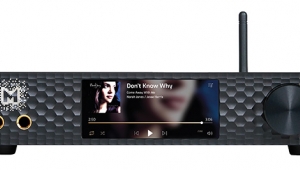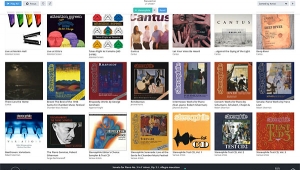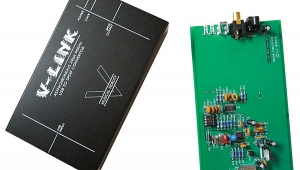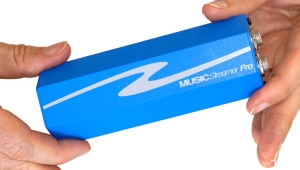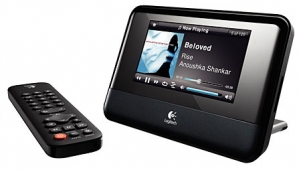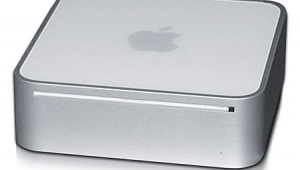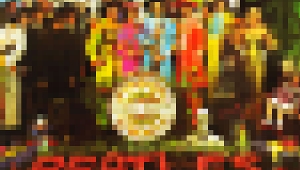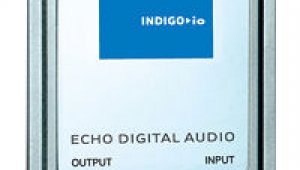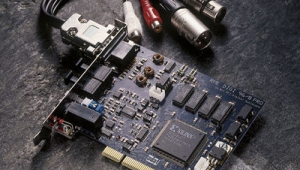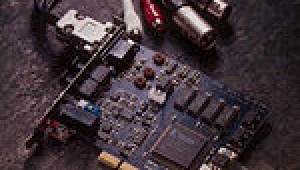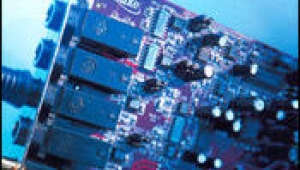| Columns Retired Columns & Blogs |
RME Digi96/8 Pro computer soundcard Page 2
Almost all the rest of the screen is devoted to output format: input or playback data; ADAT or S/PDIF formats; choices for the digital output of emphasis flag on or off, professional or consumer mode, audio or non-audio data; and output status. The analog output channels can be switched between adjacent pairs of ADAT tracks, and 6dB attenuation steps are offered. (Again, the current version of the card and software offers continually variable adjustment of level.)
The Clock Mode menu offers the usual choices between Master or Slaved to the input word clock. With the AutoSync mode activated, the Digi96 continuously searches for a valid input clock, allowing recording on the fly without having to wait for signal lock to be achieved, with software that can make use of this feature.
Associated Equipment
The RME Digi96/8 Pro was installed in a no-name Pentium MMX 166MHz with 39GB of hard drive, running Windows 98, WinAmp 2.5, and CoolEdit 2000. Comparison soundcards included an ancient Soundblaster 16 and the Digital Audio Labs CardDeluxe.
Digital source components included dCS 904, Manley, and Apogee PSX-100 A/D converters, a Mark Levinson No.31.5 CD transport, and Panasonic A-120 and California Audio Labs CL-20 DVD players for playback of commercial 24-bit/96kHz recordings. The card's digital output fed a Levinson No.30.6 or Musical Fidelity X-24K D/A processors, both 96kHz-capable. This was either direct, or via a dCS 972 upsampler or Z-Systems rdp-1 digital equalizer (updated to handle 96kHz sources) if I wanted to try some digital EQ. Digital datalinks were mainly 6' lengths of Canare 110-ohm AES/EBU cable. I also used the card to feed the optical digital input of a Yamaha @PET RP-U100 desktop receiver (reviewed in the December 1999 Stereophile).
Preamplifier was the Mark Levinson No.380S, feeding Levinson No.33H monoblock power amplifiers via Madrigal CZ Gel-1 balanced interconnects. I also used CZ Gel-1 to connect the No.30.6 to the preamp, while the Digi96/8 Pro's analog outputs were connected to the preamp via Canare unbalanced interconnect with a RadioShack TRS-to-twin-RCA adapter.
Loudspeakers were mainly B&W Silver Signatures, with Mirage MRM-1s, Dunlavy SC-IV/As, Dynaudio Contour 1.3 Mk.IIs, Joseph Audio RM7si Signatures, and Thiel PCSes seeing service. Speaker cables were variously AudioQuest Sterling and CV-4, Goertz AG3 Divinity, Symo, and Cardas Cross. Main headphones were Stax Lambda Pros with SRM-T1S tube amplifier, fed from the preamplifier, though I also used Sennheiser HD-580s and Sony MDR-7506es.
A PS Audio Power Plant 300 fed AC at 90Hz to the preamps only, with everything else (other than the power amps) plugged into Audio Power Industries 116 Mk.II and PE-1 AC line conditioners.
Sound
For nearly the entire year that I used the Digi96/8 Pro before writing this review, I used its digital inputs and outputs almost exclusively. Generally I fed its AES/EBU output to the Mark Levinson No.30.6 D/A processor. Throughout this period, the RME card worked flawlessly in this mode, whether I was recording to hard drive using CoolEdit 2000, or playing back the resultant WAV files. I made use of material with four sample rates—44.1kHz, 48kHz, 88.2kHz, and 96kHz—and again, the RME card worked without incident. Checking its data integrity with a PrismSound DScope II revealed that it was transparent, ie, the data stored on the hard drive and sent to its output were the same as it had received via its input. (This is not necessarily the case with some cards, I am told.)
- Log in or register to post comments
